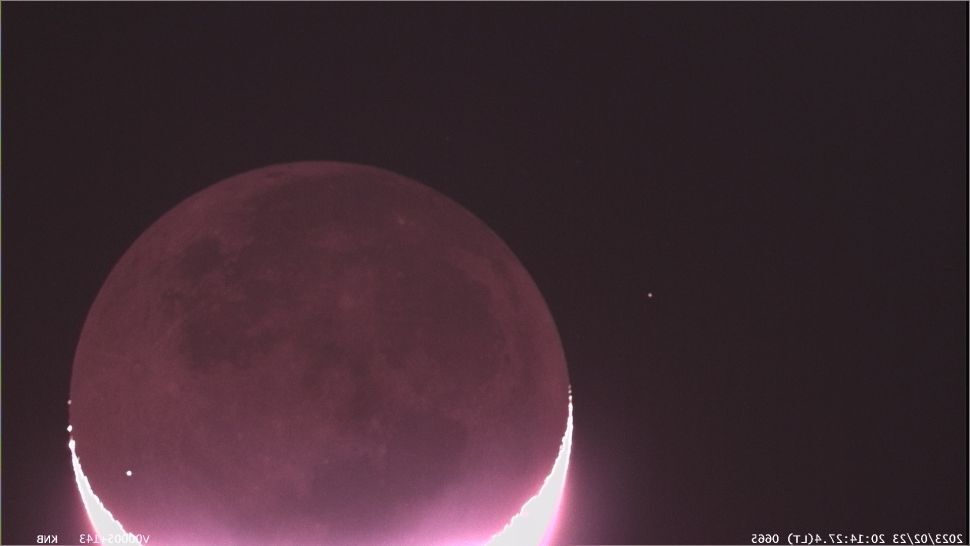11.03.2023
The space rock created a brief but brilliant flash that was captured from Earth.
A Japanese astronomer captured the telltale flash of a meteorite impacting the moon, causing a brief flash on our celestial neighbor's nightside.
Daichi Fujii, curator of the Hiratsuka City Museum, recorded the event using cameras set to monitor the moon.
The time of the flash was 20:14:30.8 Japan Standard Time (7:14 a.m. EST, or 1114 GMT) on Feb. 23. The meteorite appears to have struck near Ideler L crater, slightly northwest of Pitiscus crater, Fujii said.

Japanese astronomer Daichi Fujii captured this shot of a meteorite impacting the moon (bright flash at bottom left) on Feb. 23, 2023. (Image credit: Daichi Fujii (Hiratsuka City Museum))
Meteors travel on average at around 30,000 mph (48,280 kph), or 8.3 miles per second (13.4 km/s). Their high-velocity impacts generate intense heat and create craters, while also giving out a brilliant flash of visible light. Moon impacts can be seen from Earth, as captured above, if they are large enough and occur in an area during lunar nighttime facing Earth.
The newly created crater could be around a dozen meters (39 feet) in diameter and may eventually be imaged by NASA's Lunar Reconnaissance Orbiter or India's Chandrayaan 2 lunar probe, Fujii said.

